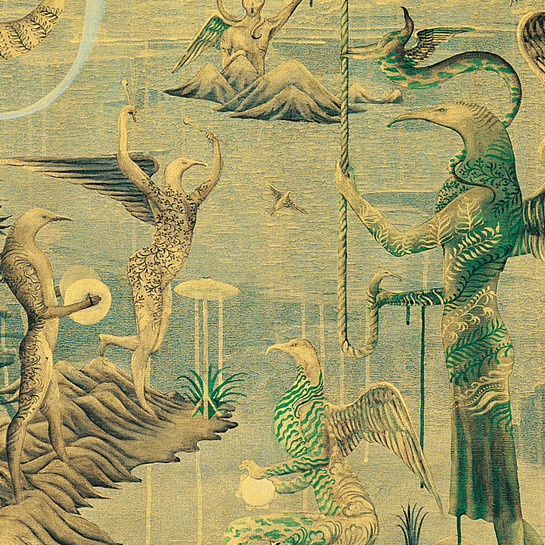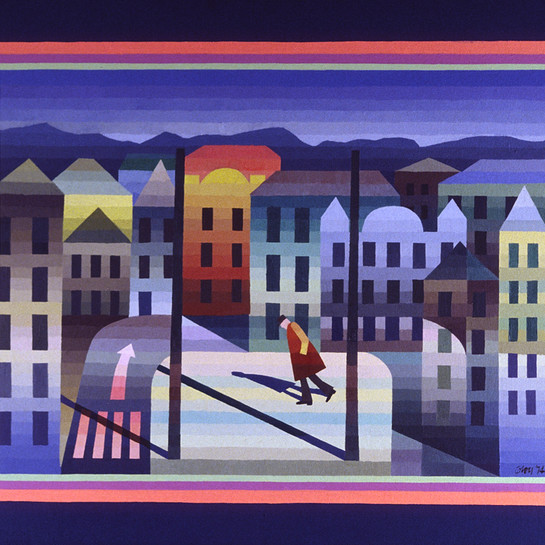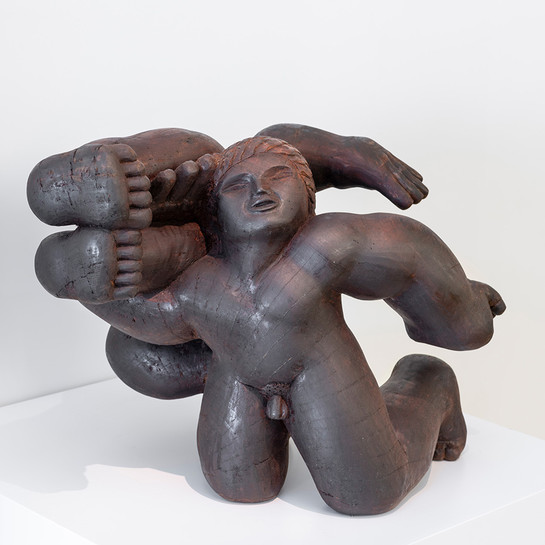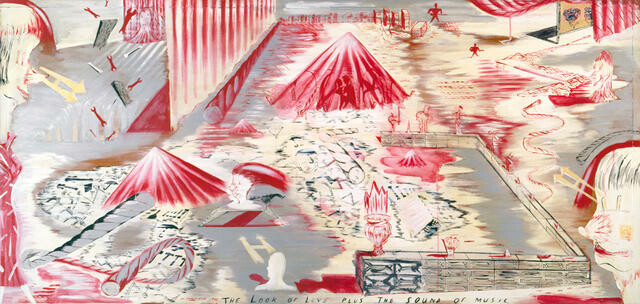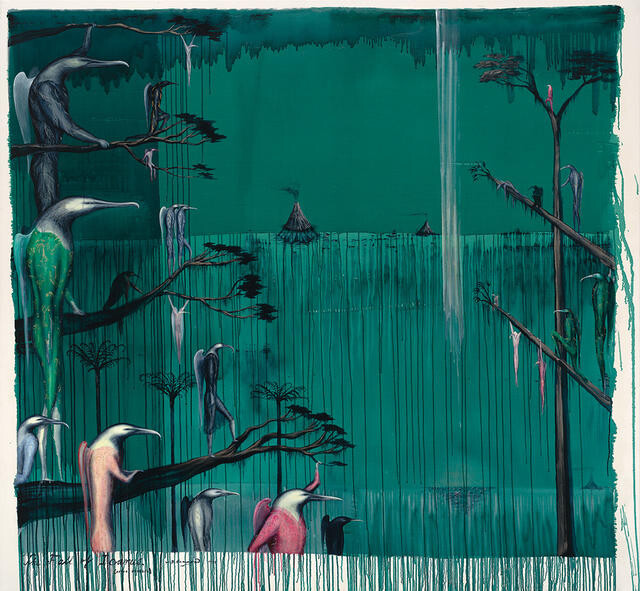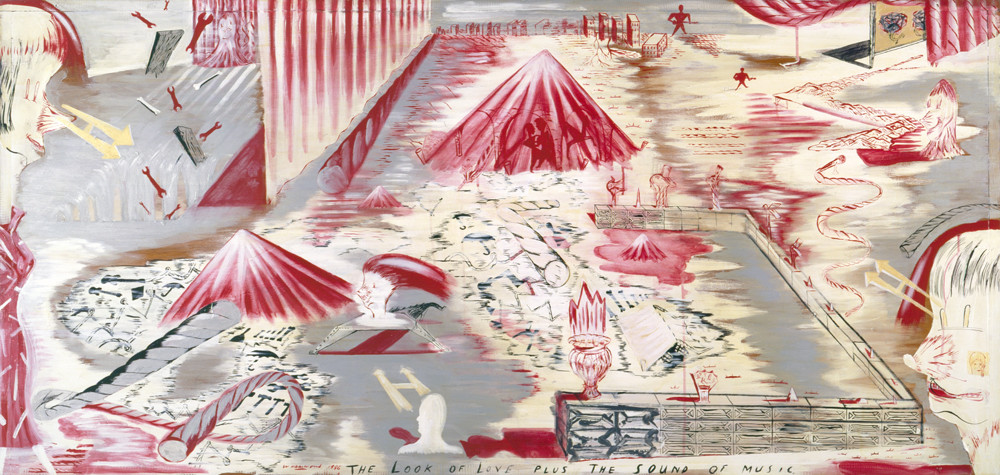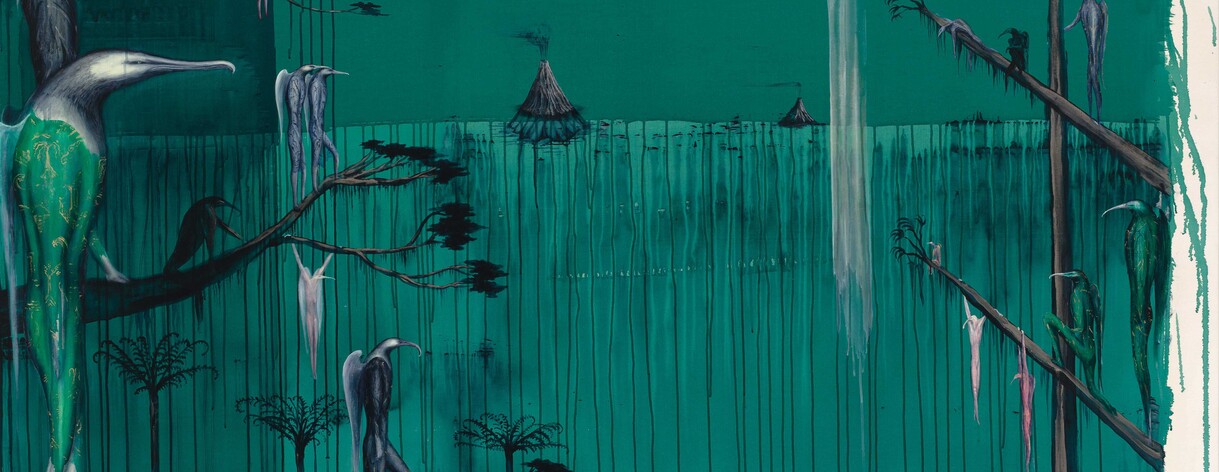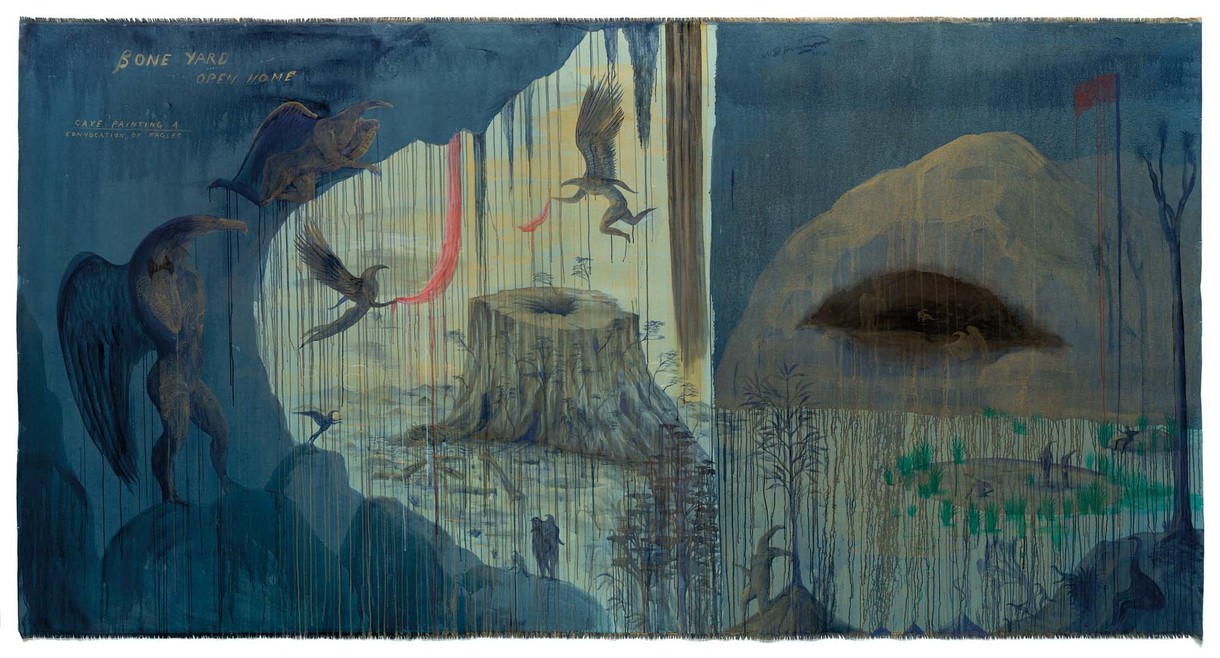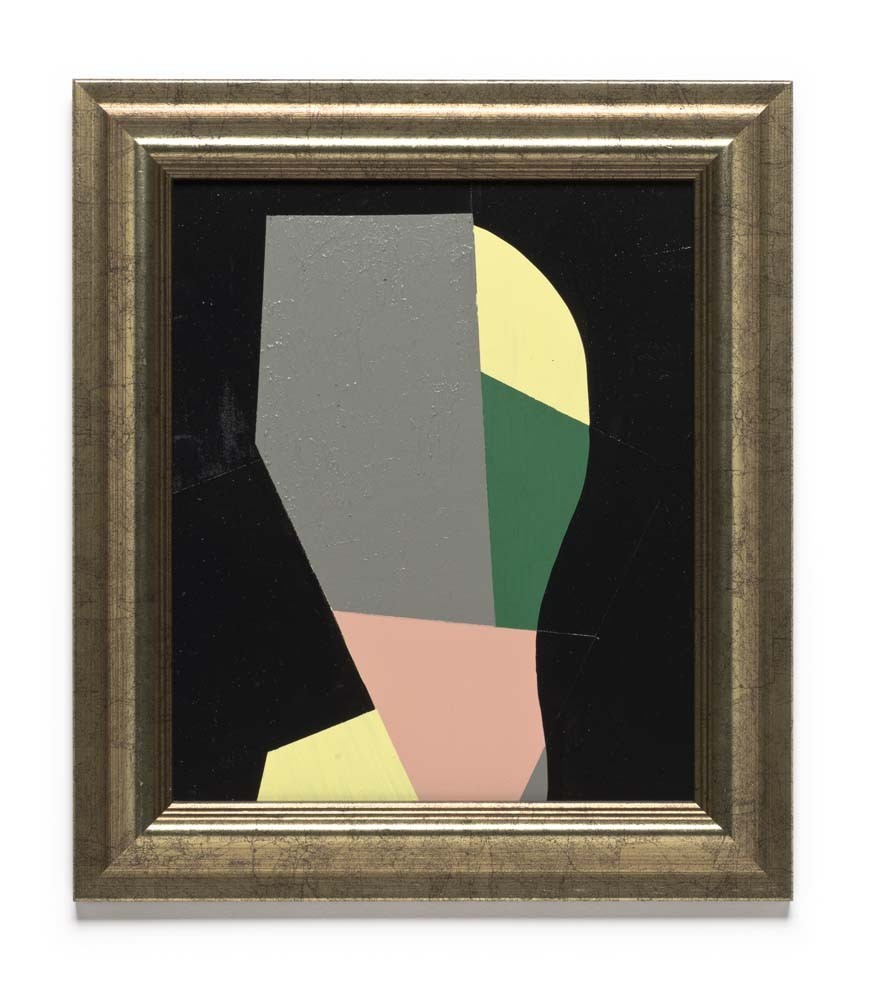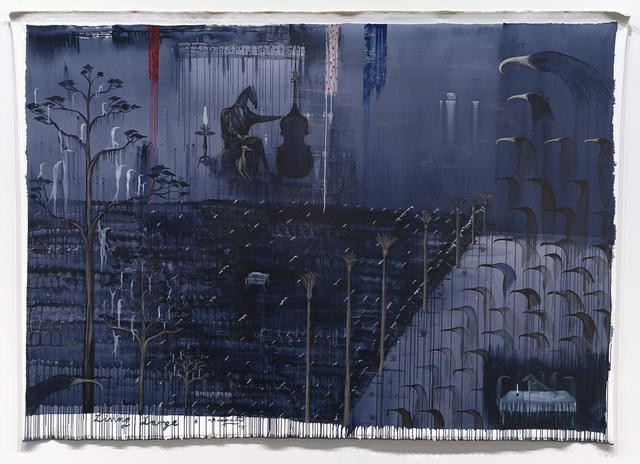Bill Hammond
Aotearoa New Zealand, b.1947, d.2021
The look of love plus the sound of music
- Acrylic on board
- Purchased, 1986
- 820 x 1740mm
- 86/20
Tags: brick (clay product), curtains (window hangings), dancers, guitars, landscapes (representations), mountains, musical instruments, performing artists, red (color), skeleton and skeleton components, Surrealist, tools, umbrellas, urban landscapes, urns
